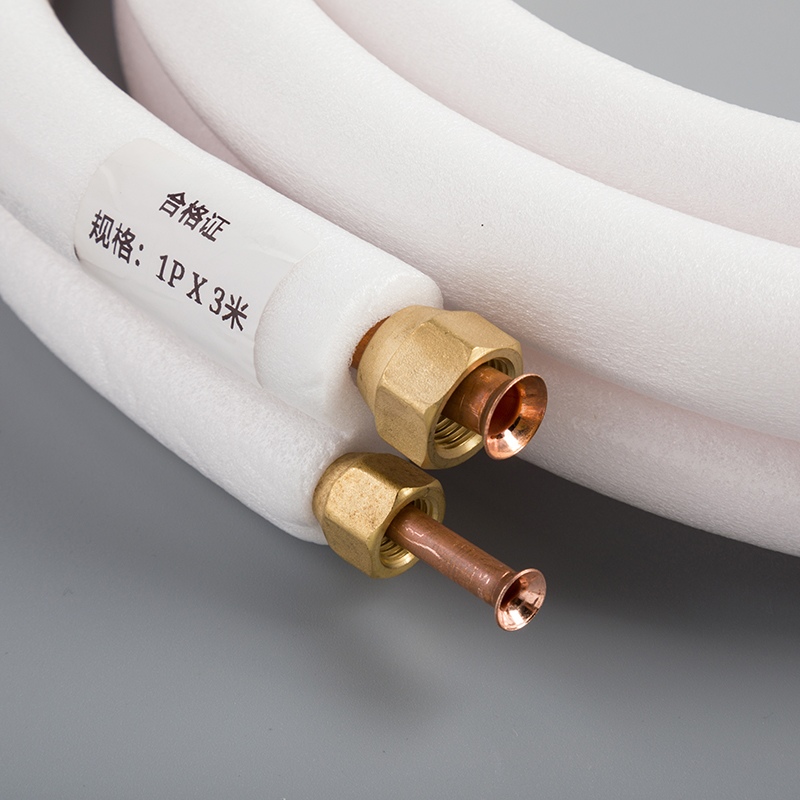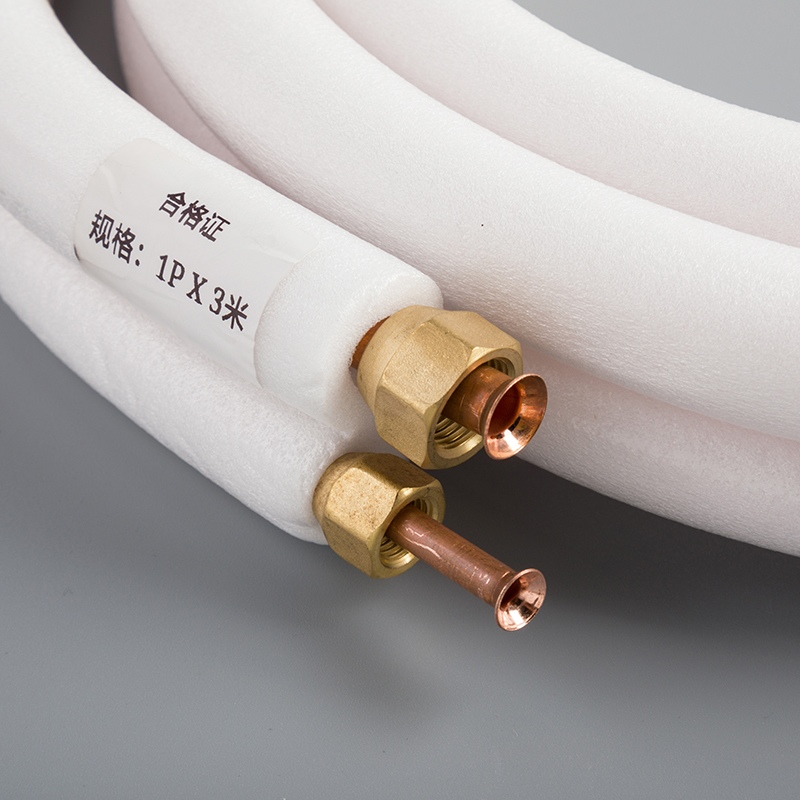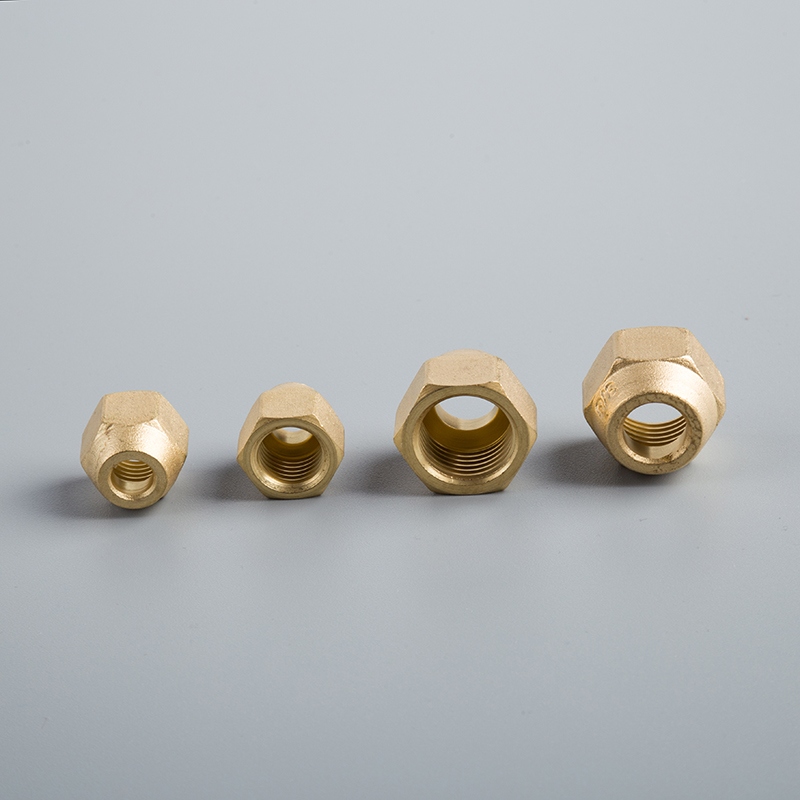Effective DIY Methods for Insulating Copper Pipes

Insulating copper pipes is a crucial step in maintaining energy efficiency and preventing potential issues. By choosing to insulate your own pipes, you not only save on costs but also ensure a more sustainable household. This blog will guide you through the process of DIY insulation copper pipe, highlighting the benefits and techniques involved. From reducing heat loss to increasing water temperature, insulation copper piping can significantly impact your home's energy consumption and comfort.
Understanding Copper Pipe Insulation
When insulating copper pipes, it is essential to understand the purpose behind this practice. Insulating copper pipe serves several crucial functions within a household plumbing system. By preventing heat loss, condensation buildup, and freezing, homeowners can maintain efficient water flow and protect their pipes from potential damage.
Why Insulate Copper Pipes?
Preventing Heat Loss
Insulating copper pipes helps in retaining the heat within the pipes themselves. This ensures that hot water remains at the desired temperature as it travels through the plumbing system, ultimately leading to energy savings for the household.
Reducing Condensation
Insulation materials for pipe insulation play a significant role in reducing condensation on cold water pipes. By adding an extra layer of protection, homeowners can prevent moisture buildup that may lead to corrosion or other issues over time.
Preventing Freezing
One of the most critical reasons to insulate copper pipes is to prevent freezing during colder months. By maintaining adequate insulation, homeowners can safeguard their plumbing system from potential damage caused by frozen water within the pipes.
Types of Insulation Materials
When considering insulation copper pipe, there are various materials available to choose from based on specific needs and preferences:
Foam Tubes
Fiberglass Wrap
Reflective Foil
Rubber Pipe Insulation Tape
Spray Foam Insulation
Each type of material offers unique benefits and applications for insulating copper piping, ensuring that homeowners can select the most suitable option for their particular situation.
Tools and Materials Needed

Essential Tools
1. Grab a Measuring Tape: Measure the length of the pipes accurately to ensure the right fit for insulation.
2. Utilize a Utility Knife: Cut through insulation materials with precision to customize them for your copper pipes.
3. Secure with Insulation Tape: Use this tape to fasten the insulation in place securely, preventing any movement or gaps.
Required Materials
1. Opt for Insulation Material: Select from a range of options such as foam or fiberglass based on your specific needs and preferences.
2. Choose an Adhesive or Sealant: Ensure a tight seal by using an appropriate adhesive like Armaflex 520 for effective installation.
3. Finish with Electrical Tape, Duct Tape, or Copper Wire: Use these materials to secure the ends and joints of the insulation, providing added protection against external elements.
Step-by-Step Guide to Insulating Copper Pipes

Preparation
Measuring the Pipes
To begin the insulation process, accurately measure the length of the copper pipes using a measuring tape. This step ensures that you acquire the right amount of insulation material for a snug fit around the pipes.
Cleaning the Pipes
Before applying any insulation, it is essential to clean the copper piping thoroughly. Use a damp cloth to remove any dust, dirt, or debris from the surface of the pipes. This cleaning step ensures proper adhesion and effectiveness of the insulation material.
Applying the Insulation
Cutting the Insulation Material
Once you have measured and cleaned the copper pipes, it's time to cut the insulation material to size. Using a utility knife, carefully trim the foam or fiberglass wrap to match the length of each pipe accurately.
Wrapping or Placing the Insulation
With your cut insulation material ready, proceed to wrap or place it around the copper pipes securely. Ensure that there are no gaps or exposed areas along the length of each pipe, providing complete coverage for optimal insulation benefits.
Securing the Insulation
Using Insulation Tape
After wrapping the insulation material around each pipe, use insulation tape to secure it in place. Wrap the tape tightly around the outer layer of insulation, ensuring that it holds firmly without any loose ends or gaps.
Sealing Joints and Ends
To finalize the insulation process, seal any joints or ends where multiple pieces of insulation meet. Use additional insulation tape or adhesive as needed to create a continuous barrier along all sections of insulated copper piping, enhancing its effectiveness against heat loss and condensation buildup.
Additional Considerations
Insulating Outdoor Pipes
When insulating outdoor pipes, homeowners need to consider additional factors to ensure the longevity and effectiveness of the insulation. Weatherproofing is crucial in protecting the pipes from external elements such as rain, snow, and extreme temperatures. By adding a weather-resistant layer over the insulation, homeowners can safeguard their outdoor plumbing system against damage and deterioration over time.
For UV protection, it is essential to choose insulation materials that can withstand prolonged exposure to sunlight. UV rays can degrade certain types of insulation over time, compromising their insulating properties. Homeowners should opt for materials specifically designed for outdoor use or apply a UV-resistant coating to maintain the integrity of the insulation and prolong its lifespan.
Maintenance Tips
To maintain the efficiency of insulated copper pipes, regular inspections are recommended. Homeowners should periodically check the condition of the insulation for any signs of wear, tear, or damage. By identifying issues early on, they can address them promptly and prevent potential problems with their plumbing system.
In case of damaged insulation, immediate repairs are necessary to ensure continued protection and performance. Whether due to physical damage or normal wear and tear, damaged insulation can compromise the effectiveness of the entire system. Homeowners should repair or replace damaged sections promptly using compatible materials to maintain optimal insulation levels throughout their plumbing network.
Expert Testimony:
Expert Team
If you’re still unsure, don’t hesitate to explore our Pipe Insulation collection or reach out to our expert team for professional guidance.
Frequently Asked Questions (FAQs)
Common Concerns
Can I Insulate Pipes Myself?
Insulating pipes yourself is a feasible and rewarding task that many homeowners undertake. By following the proper steps and guidelines, you can effectively insulate your copper pipes to enhance energy efficiency and prevent potential issues. With the right tools and materials at hand, insulating copper pipe can be a manageable project for most individuals.
How Long Does Insulation Last?
The durability of insulation material varies depending on the type chosen and the environmental conditions it is exposed to. Generally, well-installed insulation can last for several years, providing consistent protection for your copper pipes against heat loss and freezing. Regular inspections and maintenance can help prolong the lifespan of the insulation, ensuring continued effectiveness over time.
What Temperature Should Insulation Material Be Rated For?
Selecting insulation material rated for specific temperature ranges is crucial to its performance and longevity. When choosing insulation material, ensure that it is suitable for the temperatures present in your plumbing system. Materials like Armaflex are commonly used for this purpose, offering reliable protection against heat loss and condensation buildup in copper pipes.
Insulating copper pipes is a practical and cost-effective way to enhance energy efficiency and prevent potential issues. By taking the DIY approach, homeowners not only save on expenses but also contribute to a more sustainable living environment. With over 30 years of experience in plumbing and insulation, enthusiasts have successfully insulated their pipes, experiencing significant financial savings and improved hot water retention. Embracing DIY methods for pipe insulation offers long-term benefits, making it a rewarding and accessible project for all households. Start insulating your copper pipes today for a more efficient and comfortable home!
See Also
Exploring the Perfect Insulation for Copper Piping
Key Benefits of Insulating Your Copper Pipes
Simple DIY: Professional Installation of Copper Pipe Coils


